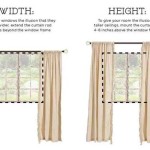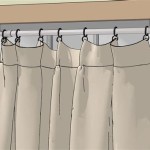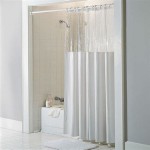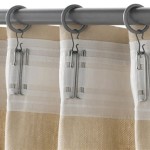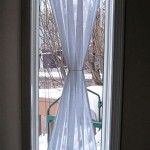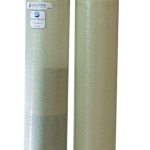Curtain Pins: A Comprehensive Guide to Usage
Curtain pins, indispensable tools for hanging curtains, provide a secure and elegant solution for window treatments. These versatile fasteners come in various materials, sizes, and designs, catering to diverse curtain fabrics and window styles.
Materials and Types
Curtain pins typically consist of a sturdy pin and a decorative head. Pins can be made from brass, steel, or other durable metals, ensuring longevity and resistance to bending or breaking. Decorative heads, available in a wide range of shapes, sizes, and finishes, enhance the aesthetic appeal of curtains and complement interior decor.
Choosing the Right Curtain Pins
Selecting the appropriate curtain pins depends on the weight and fabric of the curtains. Lightweight fabrics like sheer or voile require smaller, less sturdy pins, while heavier materials like velvet or upholstery fabrics demand larger, more substantial pins. The decorative head should also complement the curtain design and overall room aesthetic.
How to Use Curtain Pins
Installing curtain pins is a straightforward process:
- Mark the Curtain Header: Using a measuring tape, determine the desired spacing between the curtain pins. Mark these points along the curtain header using a pencil or fabric marker.
- Insert the Pin: Hold the curtain pin at a slight angle and push it through the fabric at the marked point. Ensure the pin goes through both layers of the fabric, including the lining.
- Tighten the Decorative Head: Place the decorative head onto the pin and gently tighten it by hand or using a small set of pliers. Avoid overtightening, as it may damage the fabric.
- Hang the Curtain: Hook the curtain pins onto the curtain rod or track. Adjust the pins as needed to achieve the desired drape and fullness.
Tips for Using Curtain Pins
- Use a variety of decorative heads to create a unique and eye-catching effect.
- Consider using different pin sizes for different portions of the curtain to accommodate varying fabric weight.
- Check the curtain pins regularly and tighten them as needed to ensure proper support and prevent drooping.
- When removing curtain pins, use pliers to protect your fingers and avoid damage to the fabric.
Additional Considerations
In addition to standard curtain pins, there are specialized types designed for specific purposes:
- Loop Curtain Pins: These pins have a small loop on the end instead of a decorative head, making them suitable for curtains with small rings or tabs.
- Swaged Curtain Pins: These pins have a thickened, decorative band in the middle, providing added support and durability for heavier curtains.
- Magnetic Curtain Pins: Ideal for non-metallic curtain rods, these pins utilize magnets to hold curtains securely in place.
Conclusion
Curtain pins serve as essential accessories for hanging curtains effectively and stylishly. With proper selection and use, they enhance the functionality and aesthetic appeal of window treatments, creating a comfortable and inviting atmosphere in any room.

How To Hang Curtains With Hooks Grand Little Place

Curtain Clips What S The Best Way To Hang Your Drapery

What Are Drapery Pins Used For

How To Hang Curtains With Hooks Grand Little Place

How To Hang Pinch Pleat Curtains

How To Hang Curtains Using Drapery Pins And Ring Clips Stay Home Style

How To Hang Curtains Using Drapery Pins And Ring Clips Stay Home Style

How Do Drapery Rings Work Tips From A Workroom

A Complete Guide To Hanging And Fitting Curtains

How To Hang Curtains Tips Tricks Thetarnishedjewelblog
See Also

